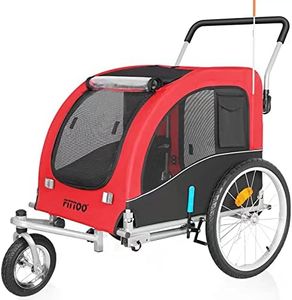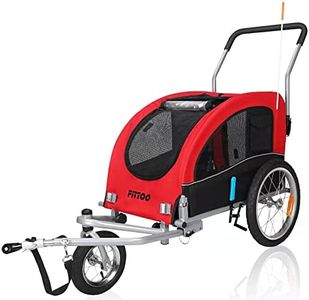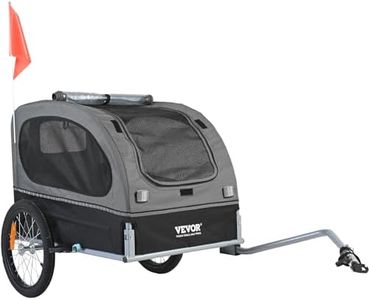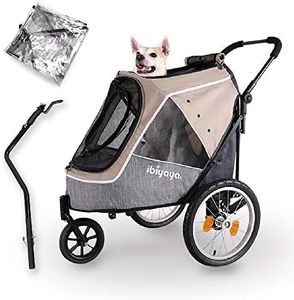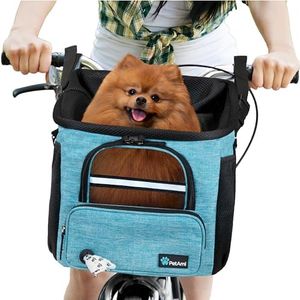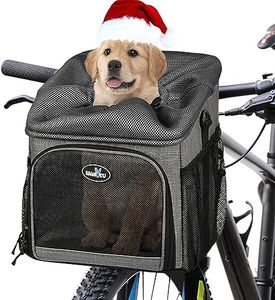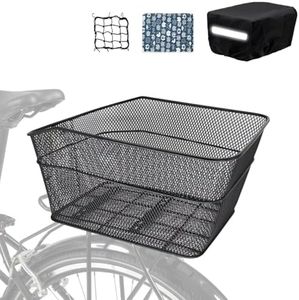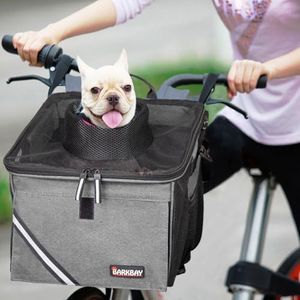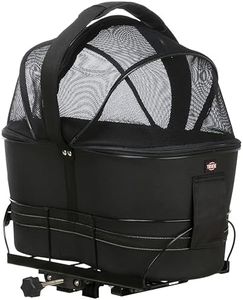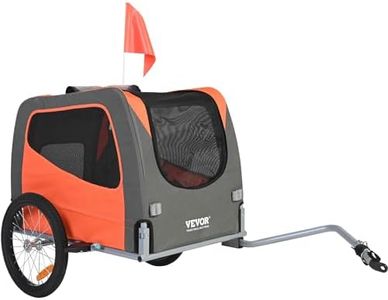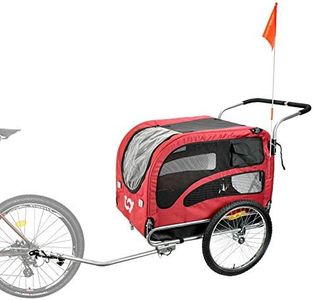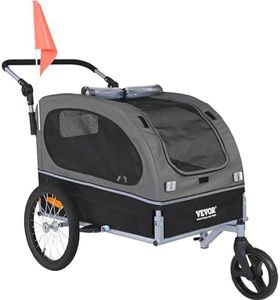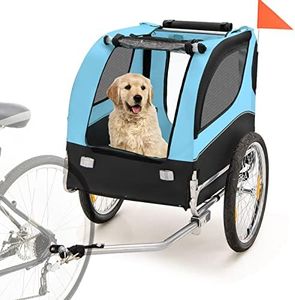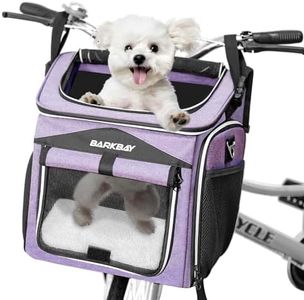We Use CookiesWe use cookies to enhance the security, performance,
functionality and for analytical and promotional activities. By continuing to browse this site you
are agreeing to our privacy policy
10 Best Dog Bicycle Carriers
From leading brands and best sellers available on the web.Buying Guide for the Best Dog Bicycle Carriers
When choosing a dog bicycle carrier, it's important to consider both your dog's comfort and safety as well as the practicality for your own riding needs. The right carrier will make biking enjoyable for both you and your furry friend. Start by thinking about your dog's size, temperament, and how often you'll be using the carrier. Also, think about the typical routes you take, as certain carriers are better for smooth paths while others are fit for a variety of terrains.Carrier TypeCarrier type refers to the style of the carrier, such as basket-style (mounted on the front or back of the bike), trailers (that attach behind the bike), or backpacks/slings (worn by the rider). This is important because each type has its own pros and cons regarding stability, ease of use, and comfort for your dog. Basket styles are good for small, calm dogs and short rides, while trailers are better for larger dogs or longer, more stable rides. Backpacks or slings are suitable for very small dogs who are comfortable being close to you. To choose the right one, consider your dog’s size, how much they move around, and the kind of trips you’ll take.
Weight CapacityWeight capacity indicates the maximum weight the carrier can safely support. This is crucial because using a carrier that's not built for your dog's weight can be unsafe and cause wear and tear. Carriers are usually divided into segments like under 10 lbs, 10-20 lbs, 20-50 lbs, and over 50 lbs. Pick a carrier that can handle at least your dog’s current weight, with a little room to spare. Always check the manufacturer’s guidelines, as exceeding the limit can put your dog and you at risk.
Safety FeaturesSafety features include harness clips, secure enclosures (like appropriately high sides or mesh covers), anti-slip bases, and reflective strips. These features matter as they keep your dog from jumping out, slipping, or going unnoticed by others, especially at night. Look for carriers that have at least a way to secure your dog inside, such as a leash attachment, and consider extras like padding and visibility for nighttime riding.
Ventilation and ComfortVentilation refers to how well air can circulate in the carrier, and comfort relates to padding, the material used, and general coziness for your dog. Both are important as dogs can overheat easily or become anxious in a cramped, stuffy space. Carriers usually feature mesh panels or open tops for airflow, and soft liners or cushions for comfort. If you plan on longer rides or live in a hot climate, prioritize excellent ventilation and comfort features when choosing.
Attachment Method and StabilityAttachment method means how the carrier connects to the bike and how stable it stays during the ride. This is important because a wobbly or poorly attached carrier can make the ride uncomfortable or dangerous for your dog and affect your handling of the bike. Some carriers clip onto handlebars, others attach to racks, and trailers connect to the rear axle. Check that the carrier is compatible with your bike’s design and consider how easy it is to install and remove if you’ll be switching regularly. For active or heavier dogs, extra stability and secure fixing are especially crucial.
Ease of CleaningDogs can shed hair, drool, or have accidents in carriers, so how easy it is to clean matters for ongoing use. Carriers with removable, washable liners or those made with wipeable materials are the easiest to maintain. If your dog is prone to messes or you plan to use the carrier frequently, look for features like machine-washable inserts or waterproof bases to make cleanup simple.
